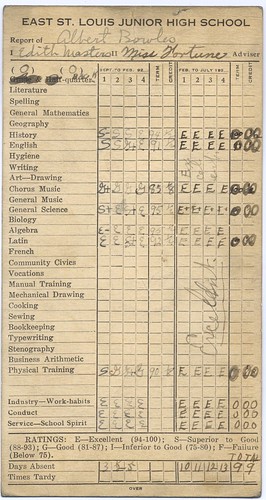Sometimes I think we forget that for many of our students we are a significant adult in their life. For some students we are one of the very few significant adults in their lives. As such, how we respond to our students can have a very big impact on them and their perception of themselves.
For Example:
A number of years ago I had the following experience which really brought this idea home to me. I was teaching Biology 11 and there was a girl in the class that I had known for a few years. She was a sweet girl, but very unsure of herself. I had noticed that she had seemed down for awhile and after class one day I asked her if everything was ok. She smiled and said that things were fine. The next day I got a call from her mom; her daughter had told her about the brief conversation we had. The daughter felt that none of her other teachers even noticed her, and so when I noticed and was concerned about her it really affected her in a positive way. Her mom shared some of the troubles her daughter was having and thanked me again for taking an interest. She said it meant a lot to them both. All this from a brief conversation; just letting another human being know that they matter.
Recently there was a situation with a high school student at my school which also illustrates my point. As a staff we had noticed that this student had changed quite a bit since September; in both his appearance and behaviour. He was also making some poor choices which were affecting more than just his schooling. Then a situation arose that was clearly a cry for help. My principal met with the mother and then with the boy. He did a great job of letting the boy know that: 1) the staff and students had noticed the changes in him; 2) we were all concerned about him; and 3) we all really liked the "old him" better than this new persona. There was more to it than that of course, this is just the Coles notes version. A week after that meeting, the student was back in class and he was so positive. He was working well and interacting with the other students, not shutting them out like before. He was back to his old self and more. His positive energy was contagious and the other students were feeding off it; very cool. I'm just guessing, but I think it probably felt pretty good to know that the staff and students at the school cared about him and liked him. He mattered.
The Take Home Message
Now I'm not saying that we need to go around acting as counselors for all of our students; in fact when students come to me with personal troubles I let them know that I will offer them support, and part of that support is finding a person with the right skills to help them (I'm not trained in that kind of stuff and I definitely do not want to botch things up.) And I know for a good percentage of our students they are doing just fine, thank you very much. But we do need to be aware that for some of our students, just the fact that we notice them and are concerned about them really is a big deal.
What About You?
How do you try to connect with your students? Do you think I'm overplaying this role of teachers as significant adults? I'd love to hear from you!









 I'm finding that a few things got lost in the transfer (like Clustr Maps) and I've been trying to re-jig things. I took my blogroll out of my sidebar and given it a separate page to try and reduce clutter. I'm still playing with the layout so that it works for me.
I'm finding that a few things got lost in the transfer (like Clustr Maps) and I've been trying to re-jig things. I took my blogroll out of my sidebar and given it a separate page to try and reduce clutter. I'm still playing with the layout so that it works for me.






 none-the-less and they do it systematically. He argues that our current school system, based on the industrial revolution no longer works. The industrial revolution needed a large number of workers with basic literacy and numeracy to work in the factories, a smaller number of more literate and numerate people were needed to manage the workers, and the top level of the hierarchy were those who would attend universities and become the doctors, lawyers, and leaders of industry. Today's societies and economies have different needs. We need creative thinkers to tackle the issues of increased urbanization, global warming, the incredible growth of the Earth's human population...
none-the-less and they do it systematically. He argues that our current school system, based on the industrial revolution no longer works. The industrial revolution needed a large number of workers with basic literacy and numeracy to work in the factories, a smaller number of more literate and numerate people were needed to manage the workers, and the top level of the hierarchy were those who would attend universities and become the doctors, lawyers, and leaders of industry. Today's societies and economies have different needs. We need creative thinkers to tackle the issues of increased urbanization, global warming, the incredible growth of the Earth's human population...
















